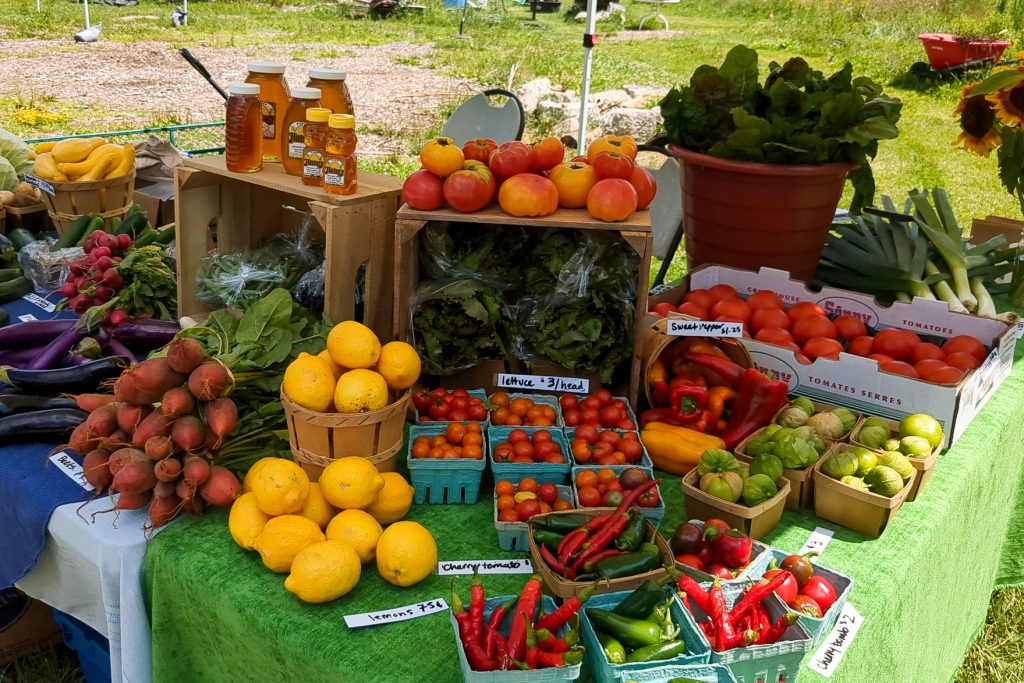Addressing food insecurity in Syracuse: Advocates push beyond legislation
Addressing food insecurity: Advocates push beyond legislation
A new federal act proposes to target food insecurity in New York, local food access advocates weigh in on which solutions best suit their community.

Syracuse food access advocates are supportive but wary of how newly proposed legislation can work alongside grassroots solutions in the fight against food insecurity.
Sen. Kirsten Gillibrand’s Healthy Food Financing Initiative (HFFI) Reauthorization Act, announced in January, promises $50 million in federal funding for the program. HFFI provides financial incentives for grocery stores to build new stores in food deserts. It intends to address an issue that, community advocates argue, will take more than an incentive bill to fix.
Food deserts are areas where citizens lack access to a full-service grocery store. Instead, they must rely on convenience stores, which offer a limited selection of processed goods.
Over half of census tracts in Syracuse’s zip code 13207, which includes the Southside neighborhood, are considered food deserts, according to the Onondaga County Health Department. Nearly a third of households citywide do not own a vehicle, making it difficult for community members to reach the nearest grocery store.
Two areas facing food insecurity are Syracuse’s Southside and Valley neighborhoods. There, community members and leaders organize to make healthy food more accessible.
Brady Farm is a non-profit urban farm on the Southside. Its leaders work with a group called Food Access Healthy Neighborhoods Now (FAHNN) to host a fresh produce market year-round in an area where the nearest grocery store is two miles away.
The inability to keep grocery stores present in low-income communities results from many years of disinvestment, according to farm director Jessi Lyons. She said that community advocates aim to address the core of that disinvestment, rather than relying on grants that only temporarily lure chain grocery stores.
In 2012, Tops supermarket received city and state incentives totaling $850,000 to open in the Valley Plaza in the Southside neighborhood. It closed in 2018.
In response and out of necessity, FAHNN founder Rhonda Vesey created a makeshift food market in the parking lot of the closed Tops and welcomed Brady Farm to join her.
Vesey has lived on Syracuse’s Southside for over 50 years. Like many neighbors, she does not have a car to reach other shopping options. Outside the old Tops building, she hung a banner reading, “Where’s Our Grocery Store?”
Gillibrand’s new federal legislation could attract the store that Vesey’s market is calling for, much like city grants and tax breaks have in the past. Meanwhile, food systems advocates question whether history is repeating.
Farm director of Brady Farm Jessi Lyons applauds Gillibrand’s bill but has reservations.
“These types of bills, while welcome, are band-aids and short-term solutions that are not going to get to the core of our challenge: The economic structures that dictate how our food system works,” Lyons said.
Non-profit food systems offer perks to customers that for-profit grocery stores can’t, Lyons said. At Brady Farm’s food stands, every dollar spent with the Supplemental Nutrition Assistance Program (SNAP) gives families a dollar back to buy more produce. The farm also offers paid apprenticeships to create community employment opportunities.
Avalon Gupta VerWiebe works for the Syracuse Onondaga Food Systems Alliance (SOFSA), a food systems stakeholders network that encompasses the entire county. VerWiebe encourages a holistic approach to government support, including improved public transportation, expanded SNAP benefits and farm-to-school programs that fight food insecurity while supporting local agriculture.
“There’s a lot of different parts of the food system that the retail arm of the food system can help address, like food access,” VerWiebe said. “But at the same time, people need to be able to afford their food.”
VerWiebe, Vesey and Lyons are all members of groups that advocate for government funding to address food insecurity. However, they recognize that funding is not always enough. They support community-building efforts as a lasting solution that stretches beyond the latest government aid.
“It’s grassroots community capacity building that helps to influence a change that can be more significant and sustained,” Lyons said.
After announcing her proposal, Gillibrand visited the FAHNN market and its organizers, who have long called for government attention to food insecurity. Despite diverse initiatives, VerWiebe said these grassroots leaders share a common goal that drives their unwavering advocacy for long-term, nuanced solutions.
“Access to safe, healthy, culturally responsive food is a human right,” VerWiebe said.
